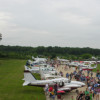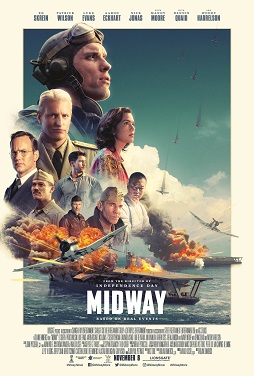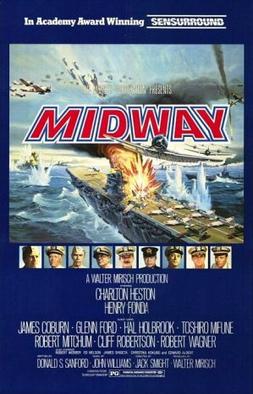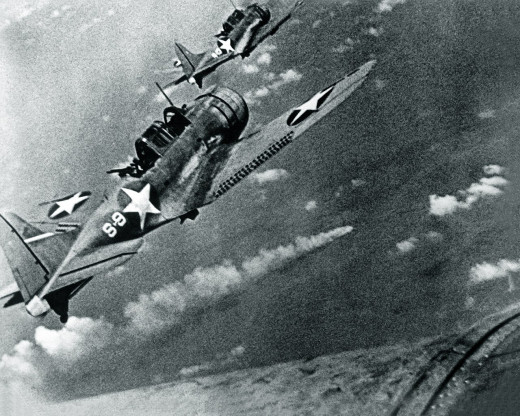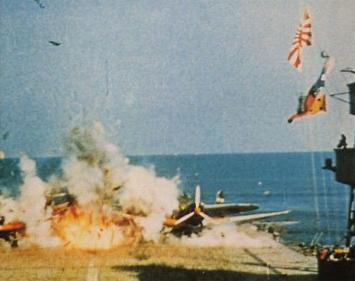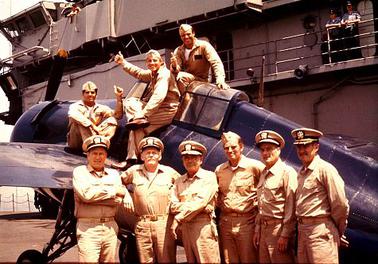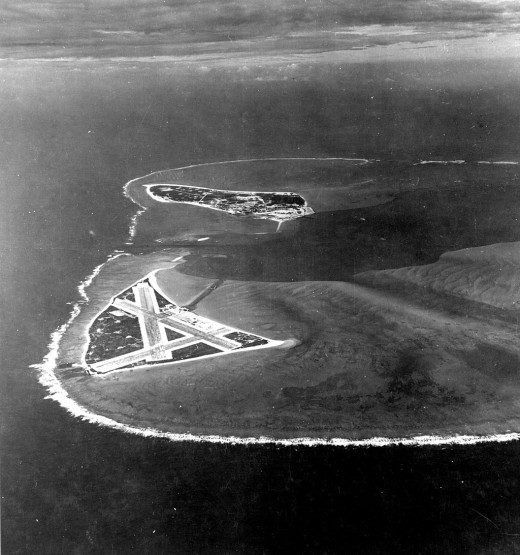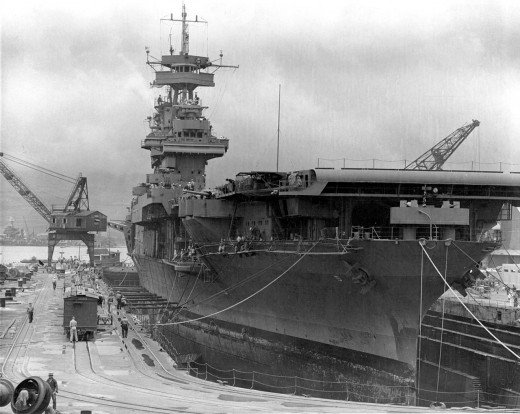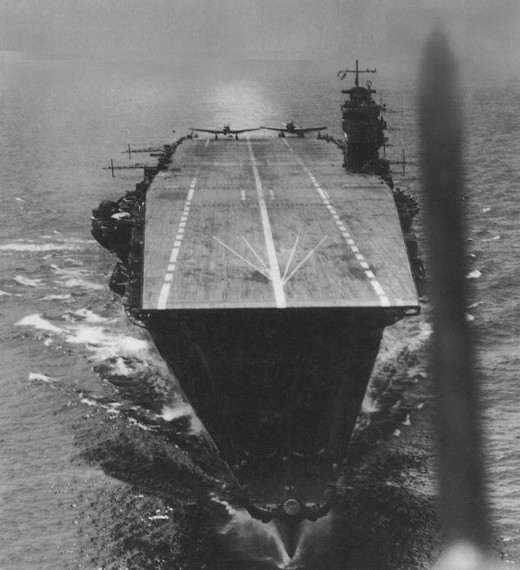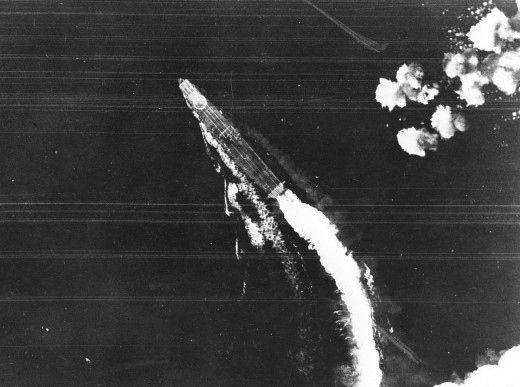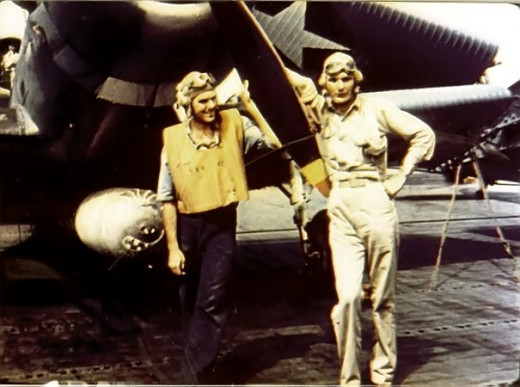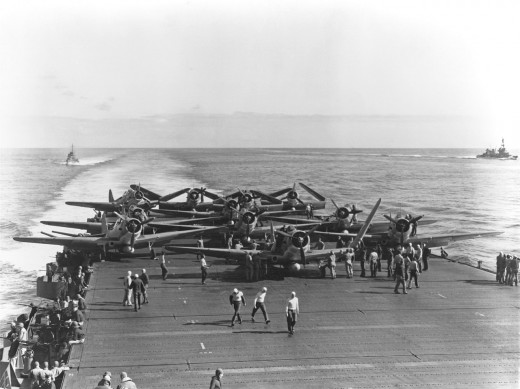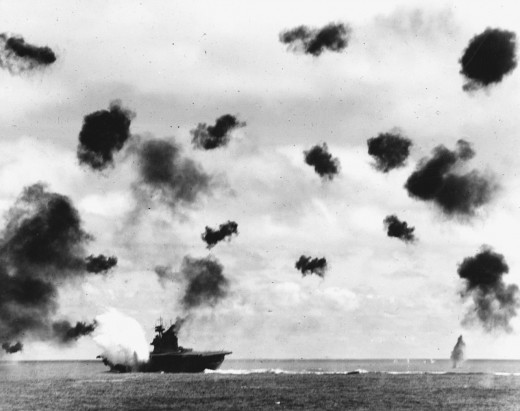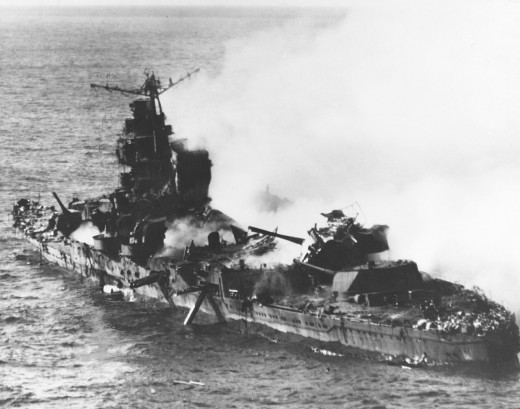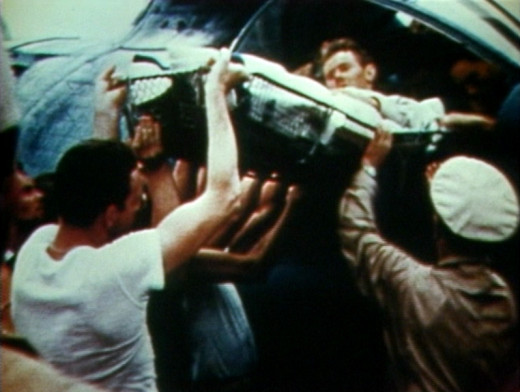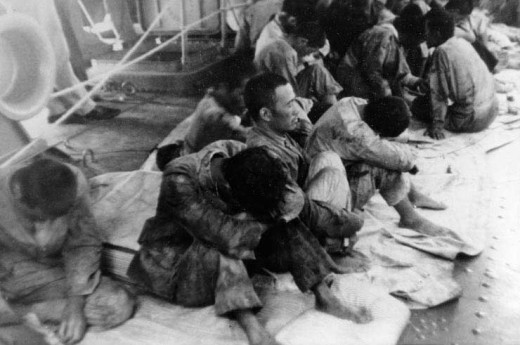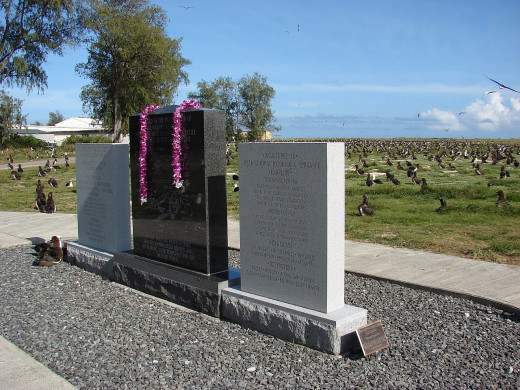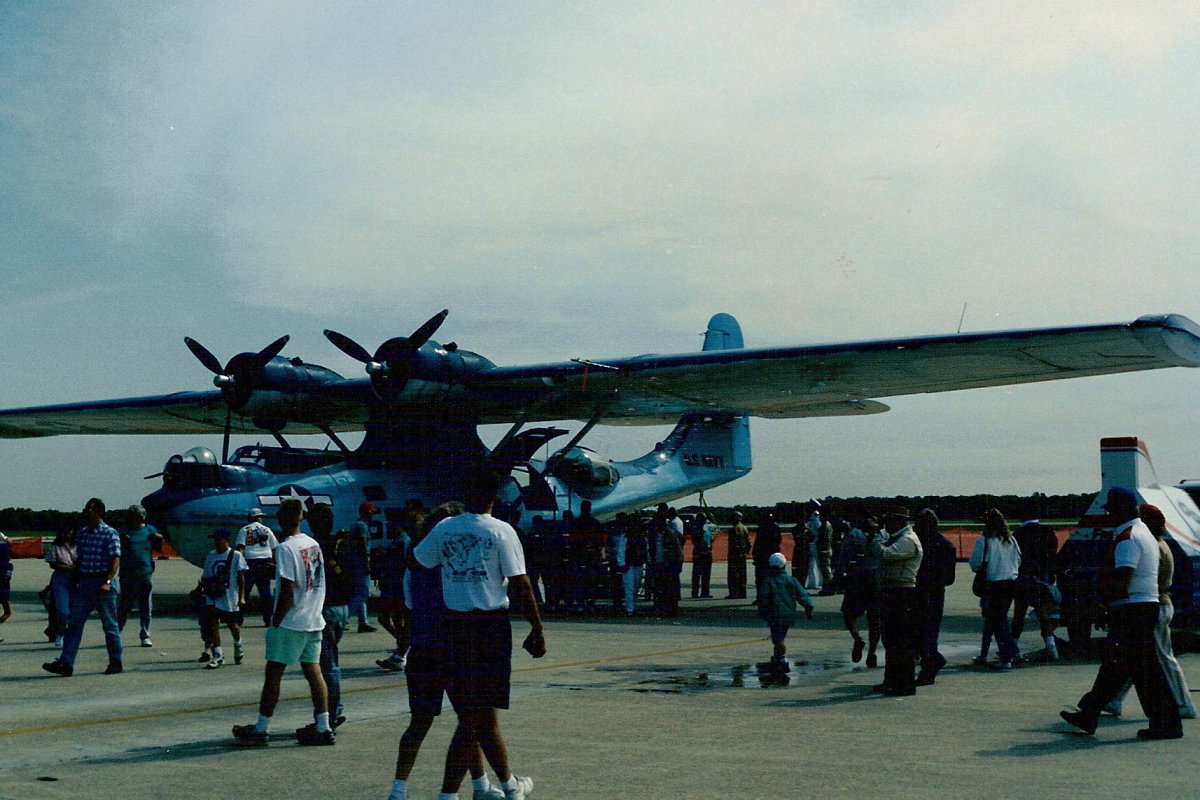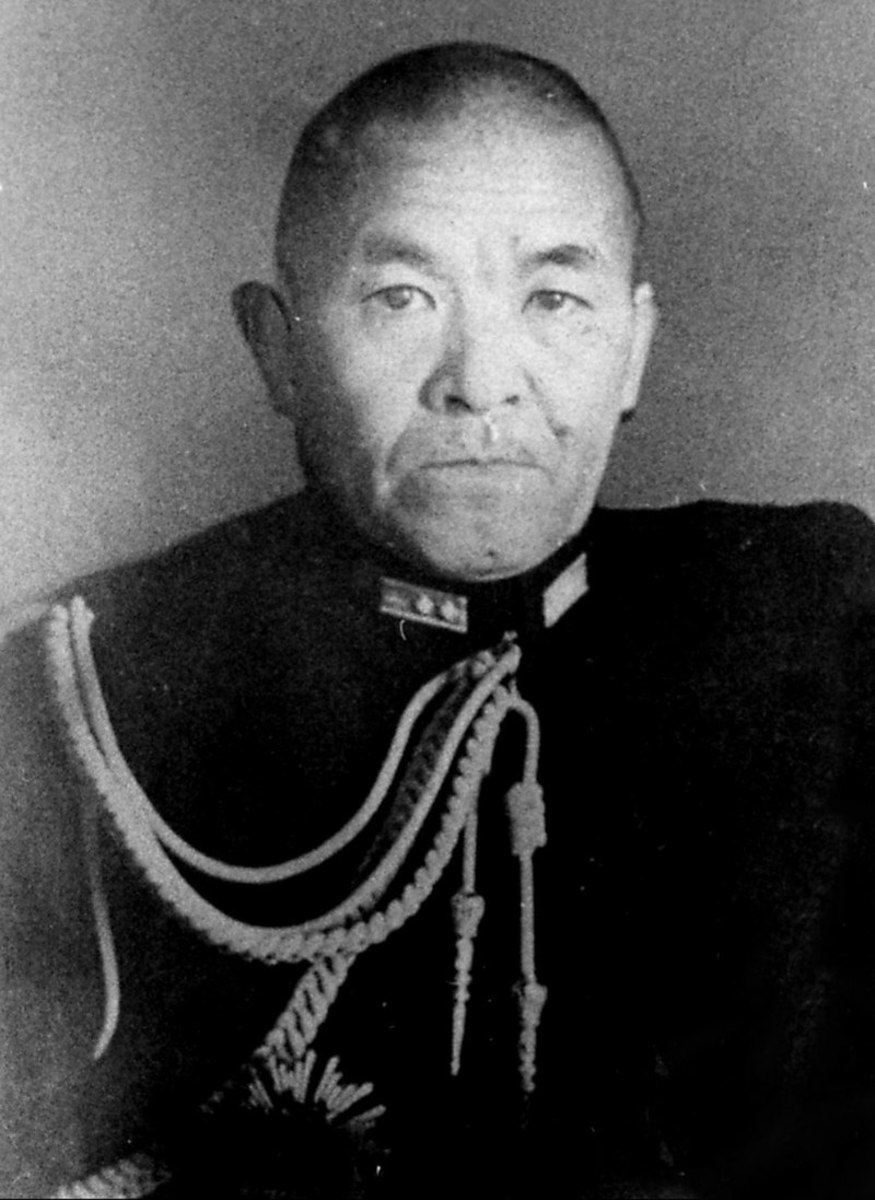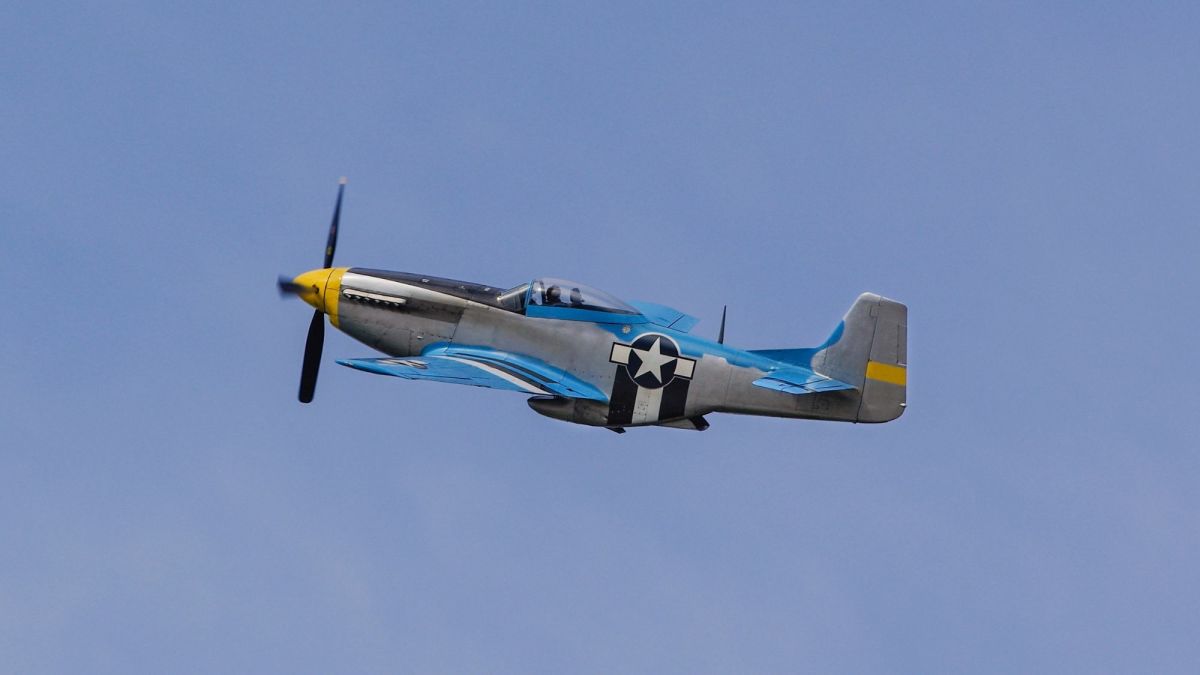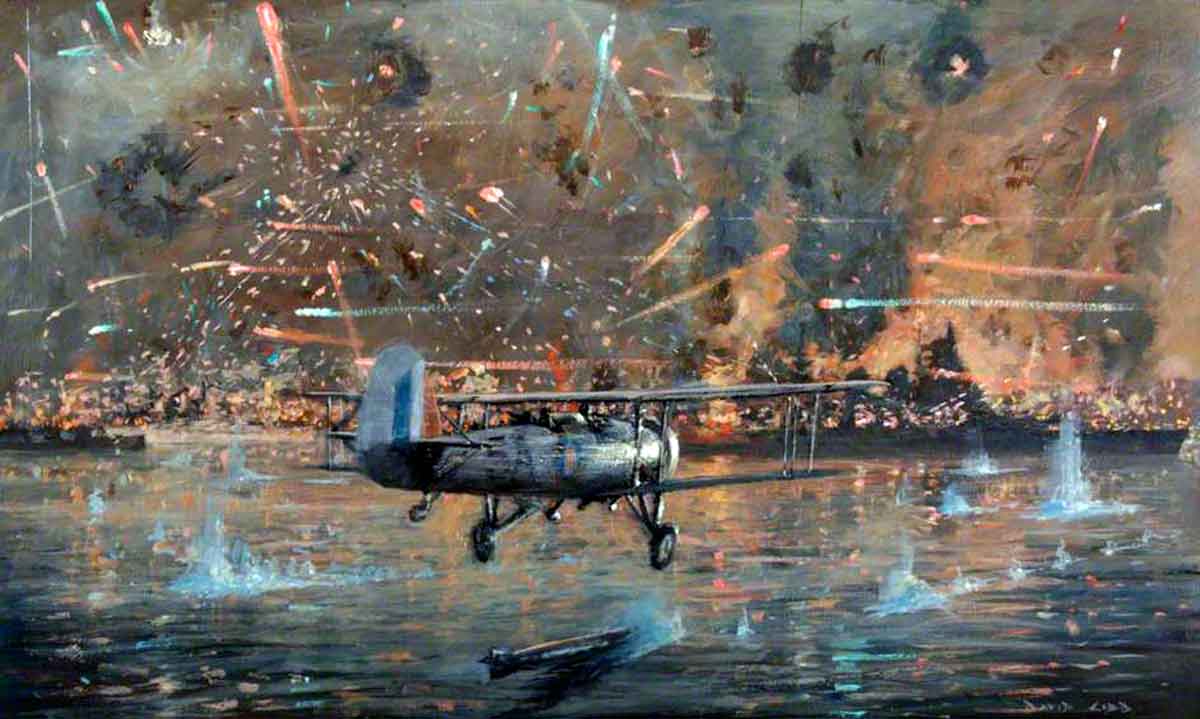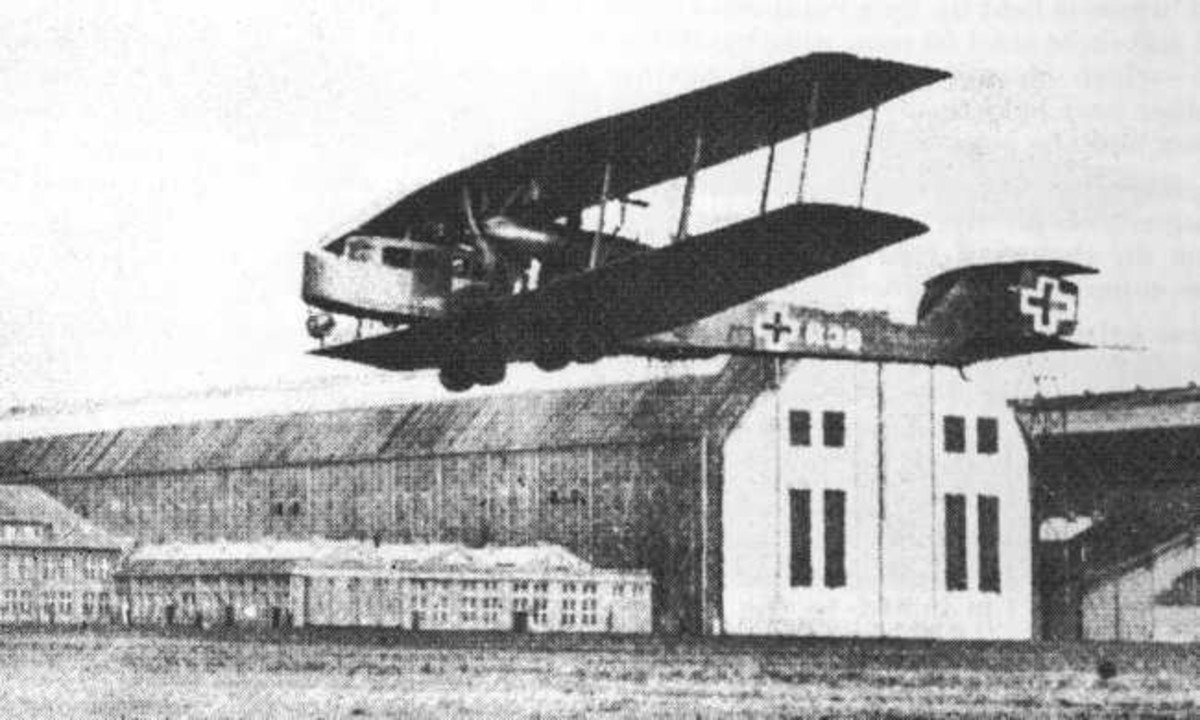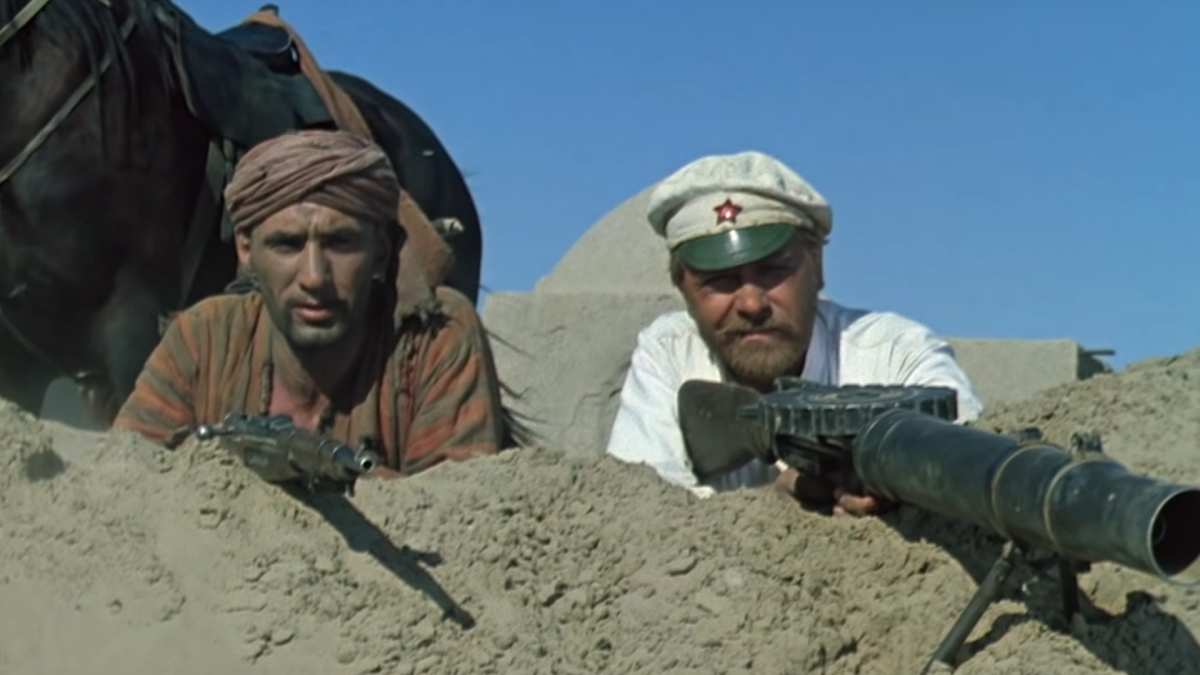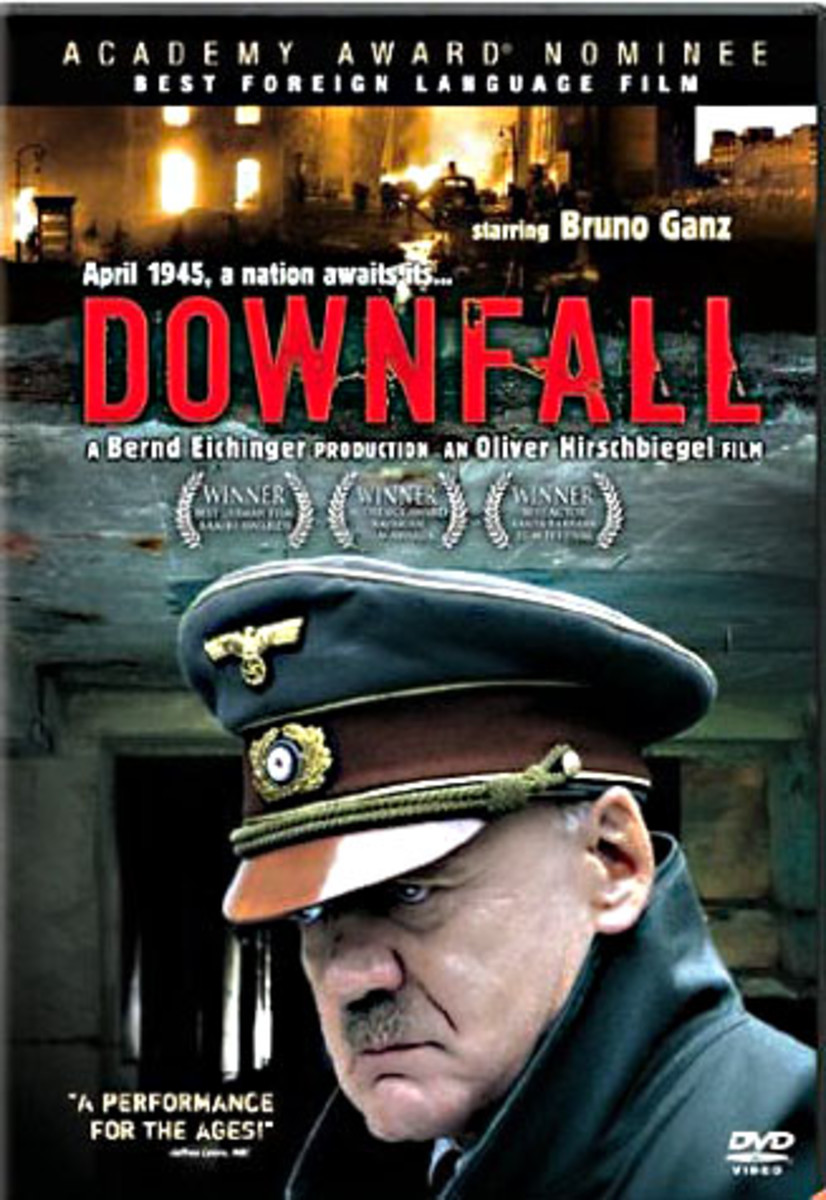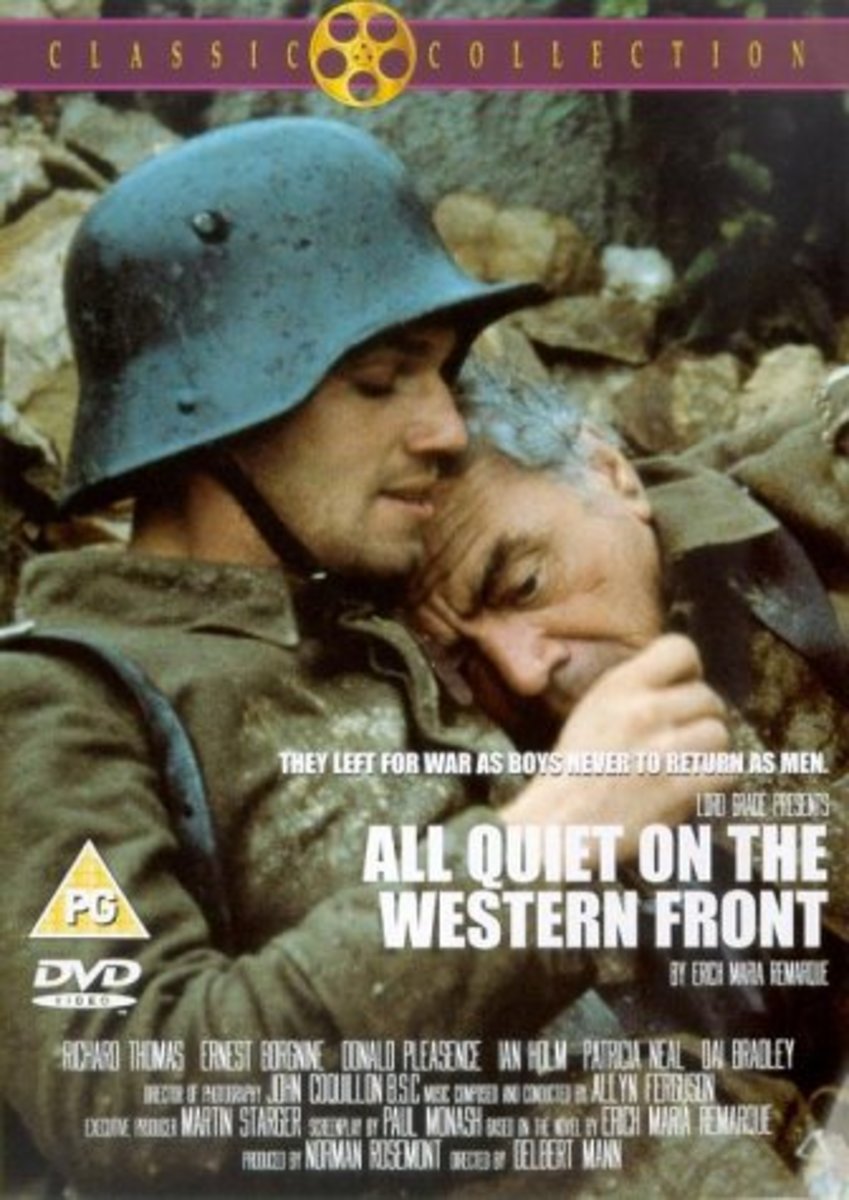Midway! Midway! Midway!



Movie Stats
The move “Midway” opened in theaters on November 8, 2019. The film had a $98 million budget. Starlight Media, a Chinese production company, contributed about $45 million to the movie’s production.[i] “Midway” grossed $17.5 million in its opening weekend. It was the highest grossing for that weekend by over $3 million.[ii] On the second week the earnings dropped to $8.8 million. That was still enough for a second-place finish.[iii]
In 1976 Universal Pictures and The Mirisch Corporation released “Midway”, a movie with an all-star cast. These movies depicted the 1942 battle of Midway. This battle is generally considered the turning point of World War II in the Pacific. These movies cover the battle of Midway, events leading up to the battle, and the times. This article covers the movies and the battle itself.
[i] Wall Street Journal, Hollywood Revisits Battle of Midway-With Backing from China by Erich Schwartzel, November 8, 2019. https://www.wsj.com/articles/hollywood-revisits-battle-of-midwaywith-backing-from-china-11573214401, last accessed 11/9/19.
[ii] International Movie Database, https://www.imdb.com/chart/boxoffice?pf_rd_m=A2FGELUUNOQJNL&pf_rd_p=99ed26bb-89a8-4157-8c78-3cd5b17286cd&pf_rd_r=FN397P33FGE0VKW0N3NZ&pf_rd_s=right-7&pf_rd_t=15061&pf_rd_i=homepage&ref_=hm_cht_sm, last accessed, 11/17/19.
[iii] International Movie Database, https://www.imdb.com/chart/boxoffice?pf_rd_m=A2FGELUUNOQJNL&pf_rd_p=99ed26bb-89a8-4157-8c78-3cd5b17286cd&pf_rd_r=TWQA3SYENNH8SHJG64PP&pf_rd_s=right-7&pf_rd_t=15061&pf_rd_i=homepage&ref_=hm_cht_sm, last accessed 11/17/2019.
Midway 2019
This movie begins in Tokyo 1937. Lieutenant Commander Edwin Layton (Patrick Wilson) U.S. Navy Attaché attends a formal dinner hosted by the Japanese Navy. He has a conversation with Admiral Isoroku Yamamoto. Admiral Isoroku Yamamoto points out the oil sanctions could make it difficult for the moderates in Japan to hold back the extremists. Admiral Yamamoto points out he stated Japan couldn’t win a long war against America.
The movie centers around Lieutenant Commander Layton and dive bomber pilots on the USS Enterprise (CV-6). The movie covers the attack on Pearl Harbor and the USS Enterprise dive bombers that were attacked during the Pearl Harbor attack. The movie covered other actions of the USS Enterprise prior to Midway. The movie also depicts the Doolittle Raid on Tokyo.
The movie shows how U.S. Naval intelligence confirmed Midway was the objective for the Imperial Japanese Navy’s next offensive. Midway sent an unencrypted message stating their fresh water condenser was broken. The Japanese navy alerted their invasion force to bring enough fresh water with them. Naval intelligence decrypted this Japanese traffic and took that as confirmation the objective was Midway.
The movie also showed in a Japanese simulation test of the battle plan the Japanese lose. The Japanese altered the test instead of the plan.
In the battle of Midway the film showed the Japanese bombing of Midway. The film depicted the ineffective attacks of the submarine USS Nautilus and the U.S. Army B-26 Marauders. The film showed the Navy bombers and attacking Japanese Zero fighters.
The film didn’t depict American fighters. The film depicted the sinking USS Lexington at the Battle of the Coral Sea and the stricken USS Yorktown at Midway. The film didn’t depict the Japanese bombing these aircraft carriers. The actual combat centered around two pilots, Lieutenant Dick Best (Ed Skrein) and Lieutenant Commander C Wade McClusky (Luke Evans).
All the major American characters were white males. There was Mrs. Dagne Layton (Rachael Parrell Fosket) who told Lt. Cmdr. Layton he needed more sleep. The big moment for Mrs. Ann Best (Mandy Moore) was when she curtly asked Lt. Cmdr. McClusky why her husband wasn’t yet a squadron commander. When Lt. Best stepped away Lt. Cmdr. McClusky told Mrs. Best her husband gives the impression, he either didn’t care if he died or didn’t think he could die. McClusky pointed out either impression doesn’t instill confidence in subordinates.
The film asserts the Japanese murdered ¼ million Chinese civilians in retaliation for the assistance the Chinese gave to the downed Doolittle Raiders. In one scene a Japanese destroyer has two downed U.S. Navy flyers on the deck. The Ship’s captain threatens to throw them overboard if they don’t tell him what ship they came from. A flier asks for a cigarette. He takes a puff from the cigarette then curses at the Japanese captain.
“Midway” gives the reasoning of both Rear Admiral Raymond A. Spruance and Admiral Isoroku Yamamoto for not continuing the battle. Admiral Spruance won a major victory. He felt continuing the battle could result in a defeat. Admiral Yamamoto saw no sense in capturing Midway simply to save face.
Wall Street Journal writer Erich Schwartzel points out “Midway” isn’t exactly franchise material.[i] While this is true there were subsequent naval battles in the Pacific that could be made with a similar style. While “Midway”, “Coral Sea”, and “Pearl Harbor” were covered in many movies, other naval battles haven’t been depicted in major Hollywood productions.
[i] Wall Street Journal, Hollywood Revisits Battle of Midway-With Backing from China by Erich Schwartzel, November 8, 2019. https://www.wsj.com/articles/hollywood-revisits-battle-of-midwaywith-backing-from-china-11573214401, last accessed 11/9/19.


Midway 1976
This movie used the docudrama format of the 1970 movie “Tora! Tora! Tora!”. The movie was not well received by critics. “Midway” runs 132 minutes and is clearly inferior to “Tora! Tora! Tora!”. “Midway” used some film clips from “Tora! Tora! Tora!”. “Midway” also used stock footage that amuses and annoys aviation buffs, people who are most likely to watch the film. The stock footage was often of the wrong type of aircraft. The most egregious example was an exploding F9F Panther. The Panther was a jet fighter-bomber that didn’t make its first flight until 1947. The F9F film footage was of a crash, ironically on the USS Midway, on June 23, 1951. Unlike the pilot in the movie, Commander George Duncan survived the crash. The footage was also used in the movies “Men of the Fighting Lady” and “The Hunt for Red October”.[i]
The movie begins just before the Battle of the Coral Sea. It covers the battle in detail. After the battle the Japanese proceed with their plans for capturing Midway. The concept is Midway was so important to America the U.S. Navy would have to send their remaining carriers against Midway. This would enable the Japanese Navy to sink the two available carriers. The Japanese believed the USS Yorktown was so heavily damaged at Coral Sea it wouldn’t be ready for combat for months.
The American intelligence is trying to figure out where the Japanese Navy will strike next. Intelligence believes the target is Midway but the evidence is flimsy. Intelligence decides to use the freshwater condenser ruse to prove the target is Midway. The ruse works and the Navy decides to perform makeshift repairs on USS Yorktown so three carriers would be ready for the battle.
A subplot is Captain Matt Garth’s (Charlton Heston) son, Lieutenant Tom Garth (Edward Albert), is in love with Haruko Sakura (Christina Kokubo), a woman whose parents are Japanese. The Sakura’s are at risk of being sent to internment camps. Haruko points out they aren’t sending German or Italian Americans to internment camps. Captain Garth had a friend check the files on Sakura’s family. She belonged to some Japanese nationalist organizations and her father subscribed to a paper that was Japanese propaganda. Haruko explained to Garth she was enrolled into these organizations as a child and wasn’t active in them. Her father was once indebted to the man who owned the paper so he subscribed to the paper even though her father believed the paper was just Japanese propaganda.
The movie depicts the reconnaissance aircraft spotting the opposing fleets. The movie covers the Japanese bombing of Midway, including the air battle between the U.S. Marine fighters and the Japanese Navy aircraft. It gives a blow by blow depiction of attacks on the aircraft carriers.
[i] This is the Most Famous Ramp Strike in (Movie) History by Dario Leone, November 11, 2017, https://theaviationgeekclub.com/famous-ramp-strike-movie-history/, last accessed 11/10/19.













The Battle of Midway – June 1942
While the Japanese ships were on their way to Midway Admiral Yamamoto received intelligence there were American carriers in the area. Admiral Yamamoto decided not to break radio silence to inform Admiral Nagumo, the head of the carrier fleet. The Japanese suspected, correctly, the Americans were listening in on Japanese transmissions.
The U.S. Navy sent out PBY Catalinas on reconnaissance missions. At 09:04 a PBY Catalina, piloted by Ensign James P.O. Lyle, spotted the minesweepers “Tama Maru No. 3” and “Tama Maru No. 5”. These minesweepers were part of the invasion force. Ensign Jack Reid, a Catalina pilot, spotted Japanese ships at 09:25. These ships were of the Japanese invasion force, commanded by Admiral Nobutake Kondo. Midway launched 9 United States Army Air Forces (USAAF) B-17s. The B-17s attacked the invasion force but caused no damage or casualties. Admiral Knodo didn’t inform Admiral Nagumo of the B-17 attack.[i] That night 4 U.S. Navy PBY-5A Catalina bombers attacked the invasion force. A torpedo struck the oiler “Akebono Maru” with a torpedo. The “Akebono Maru” was able to stay with the invasion fleet.[ii]
The next morning 15 USAAF B-17s from Midway are sent out on an armed reconnaissance mission. Shortly after the B-17s flee from Midway the Japanese carrier force launched 108 aircraft to attack Midway Island. The U.S. launched 6 U.S. Navy TBF Avengers, 4 USAAF B-26 Marauders, 16 United States Marine Corps (USMC) SBD-2 Dauntlesses, and 11 USMC SB2U Vindicators. The Japanese aircraft reach Midway Island at 05:56. Midway launches its USMC F2A Buffalo and F4F Wildcat fighters. These fighters engage the Japanese aircraft at 06:16. The Japanese shot down 17 American fighters. The USMC fighter squadron’s commanding officer, Major Floyd B. Parks, was among those shot down and killed. The Japanese attack ends at 06:43. The attack set some oil tanks and buildings on fire.[iii] The Japanese lost 11 aircraft and another 14 were damaged enough to keep them out of the fight. At 07:05 the Japanese attack commander, Lieutenant Joichi Tomonaga, radioed that another attack is needed on Midway Island. Six U.S. Navy TBF Avengers and 4 USAAF B-26 Marauders from Midway attack the Japanese carrier fleet at 07:10. The Japanese shot down 5 Avengers and 2 Marauders. One B-26 was damaged and may have attempted to crash into the Akagi. The Japanese lost two Zero fighters. The Japanese spot a submarine, the USS Nautilus. At 07:15 Admiral Nagumo decided to rearm his aircraft for a second attack on Midway. At 07:28 a Japanese reconnaissance aircraft, Tone No. 4, spots and reports seeing 10 American ships. Admiral Nagumo reverses his rearm order. The U.S. carriers USS Enterprise and USS Hornet launch 116 aircraft to attack the Japanese carrier fleet. At 07:53 the Japanese spot a force of 16 USMC Dauntless dive-bombers. Nine Japanese Zeros attacked the dive-bombers. The attack scored no hits. The Japanese shot down 8 dive-bombers for the loss of 1 Zero. At 08:10 15 B-17s attacked from high altitude. There were no hits on either side. At 08:20 Admiral Nagumo receives confirmation there is at least one American aircraft carrier in the area. Admiral Yamamoto also receives word of the American carrier sighting but chooses not to interfere. At 08:27 11 USMC Vindicator dive-bombers attack the battleship Haruna. They made no hits and the Japanese shot down two Vindicators. The submarine USS Nautilus fired a torpedo at the battleship Kirishima at 08:25. The torpedo missed. The Japanese sortied the destroyer Arashi to deal with the Nautilis.[iv]
At 09:17 the Japanese aircraft that bombed Midway return to their carriers and are ordered to rearm and attack the only confirmed carrier, the USS Yorktown. At 09:18 15 Devastator dive bombers attack the Japanese carriers. The Japanese shot down all of the Devastators. Ensign George H. Gay was the only Devastator aviator to survive the attack. At 09:40 14 Devastators attack. The Devastators scored no hits. The Japanese shot down 9 Devastators for the loss of one Zero. Another Devastator had to ditch. At 10:10 12 Devastators with 6 escorting Wildcats attacked. The leader of the Wildcats was Lieutenant Commander John Smith Thach. His Wildcats would use a tactic he devised for the first time in combat. It was a tactic named the “Thatch Weave”.[v] The Wildcats shot down 4 Zeroes for one loss. The Zeros and anti-aircraft shot down 10 of the Devastators. The Japanese lost a total of 7 Zeros. The Devastators scored no hits. At 10:26 48 U.S. Navy Dauntless dive bombers attack the Japanese carriers from two different directions. The attack mortally damages the Japanese carrier Kaga. At 10:25 U.S. Navy aircraft strike the Japanese carrier Soryu and set it on fire. At 10:26 U.S. Navy fighters strafe the carrier Akagi’s deck. The Akagi is also set on fire.
The Hiryu launches 18 dive bombers and 6 fighters to attack the USS Yorktown. U.S. Navy fighters engage the Japanese and shoot down 8 Japanese aircraft. At 12:00 the Japanese aircraft attack the USS Yorktown. The Japanese planes set the USS Yorktown on fire. At 13:20 the Hiryu launched a second wave of aircraft. American fighters attack these aircraft. Five Japanese dive bombers attack the Yorktown. The sailors on the USS Yorktown are given the order to abandon ship. At 15:40 another wave of 42 U.S. Navy Dauntless dive bombers are launched to attack the Hiryu. At 17:01 these aircraft attack and disable the Hiryu.[vi] The U.S. lost 2 Dauntless dive bombers the Hiryu sank the next day.
The Japanese attempted to turn the situation around. The Japanese sent four heavy cruisers and two destroyers to attempt a night surface engagement with the American Fleet. When the force was 80 miles (125 km) from Midway Admiral Yamamoto reversed his decision and ordered the cruiser force to retreat. On June 5 the Japanese heavy cruiser force spotted the U.S. submarine USS Tambor. While taking evasive action the Japanese heavy cruisers Mikuma and Mogami collided. At 03:00 on June 6 the USS Tambor, commanded by Lieutenant Commander John W. Murphy reported the Japanese ships. B-17s and PBYs from Midway searched for the ships. At 06:30 a PBY found the two damaged cruisers. VSMB-241, commanded by Captain Marshall Tyler, took off at 07:00. It was a force of 12 SBD Dauntless and SB2U Vindicator bombers. Anti-aircraft struck Captain Richard Fleming’s Vindicator. Captain Fleming crashed his aircraft into the Mikuma. The explosion and fire killed some of the Mikuma’s crew and greatly reduced its speed. At 08:30 B-17s made an attack but did no damage. Dive bombers from the USS Enterprise and USS Hornet carried out sporadic attacks on the damaged cruisers. The dive bombers hit the Mikuma at least 5 times. The Mikuma sank and 650 of the 890 sailors on board died. The dive bombers hit the Mogami and both escorting destroyers.[vii]
On June 6, the Japanese submarine I-168 struck the USS Yorktown and the destroyer USS Hammann (DD-412) with torpedoes. The torpedoes sank both ships. The Yorktown sank on June 7.
The Japanese lost 4 aircraft carriers, 1 heavy cruiser, 292 aircraft, and about 2,500 sailors. The U.S. lost 1 aircraft carrier, 1 destroyer, 145 aircraft, and 307 service members. [viii]
[i] History Channel, Battle of Midway Tactical Overview, https://www.youtube.com/watch?v=kipF5zoCGAk, last accessed 11/11/19.
[ii] Department of the Navy – Naval History and Heritage Command, Scouting and Early Attacks from Midway, 3-4 June 1942, https://www.ibiblio.org/hyperwar/OnlineLibrary/photos/events/wwii-pac/midway/mid-1m.htm, last accessed 11/12/19.
[iii] Department of the Navy – Naval History and Heritage Command, Japanese Air Attack on Midway, 4 June 1942, https://www.ibiblio.org/hyperwar/OnlineLibrary/photos/events/wwii-pac/midway/mid-2.htm, last accessed 11/12/19.
[iv] The Battle of Midway 1942: Told from the Japanese Perspective, https://www.bing.com/videos/search?q=midway+the+japanese+side&view=detail&mid=D1F66013E519E3FC59C3D1F66013E519E3FC59C3&FORM=VIRE, last assessed 11/14/19.
[v] In the Thatch Weave fighter elements would fly abreast of each other. When an element is attacked the elements would turn towards each other.
[vi] History Channel, Battle of Midway Tactical Overview, https://www.youtube.com/watch?v=kipF5zoCGAk, last accessed 11/11/19.
[vii] Compounding Disaster: The Loss of the Mikuma at Midway, https://padresteve.com/2012/06/05/compounding-disaster-the-loss-of-the-mikuma-at-midway/, June 5, 2012, last accessed, 11/14/19.
[viii] History Channel, Battle of Midway Tactical Overview, https://www.youtube.com/watch?v=kipF5zoCGAk, last accessed 11/11/19.
Should Hollywood attempt to make films about other naval battles?
This content is accurate and true to the best of the author’s knowledge and is not meant to substitute for formal and individualized advice from a qualified professional.
© 2019 Robert Sacchi
